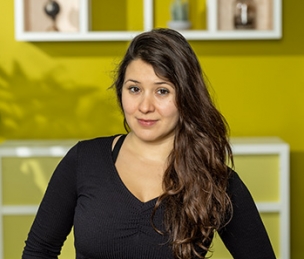Displaying 1 - 8 of 8
-
Ergin, R., Raviv, L., Senghas, A., Padden, C., & Sandler, W. (2020). Community structure affects convergence on uniform word orders: Evidence from emerging sign languages. In A. Ravignani, C. Barbieri, M. Flaherty, Y. Jadoul, E. Lattenkamp, H. Little, M. Martins, K. Mudd, & T. Verhoef (
Eds. ), The Evolution of Language: Proceedings of the 13th International Conference (Evolang13) (pp. 84-86). Nijmegen: The Evolution of Language Conferences. -
Lei, L., Raviv, L., & Alday, P. M. (2020). Using spatial visualizations and real-world social networks to understand language evolution and change. In A. Ravignani, C. Barbieri, M. Flaherty, Y. Jadoul, E. Lattenkamp, H. Little, M. Martins, K. Mudd, & T. Verhoef (
Eds. ), The Evolution of Language: Proceedings of the 13th International Conference (Evolang13) (pp. 252-254). Nijmegen: The Evolution of Language Conferences. -
Raviv, L. (2020). Language and society: How social pressures shape grammatical structure. PhD Thesis, Radboud University Nijmegen, Nijmegen.
Additional information
full text via Radboud Repository -
Raviv, L., Meyer, A. S., & Lev-Ari, S. (2020). Network structure and the cultural evolution of linguistic structure: A group communication experiment. In A. Ravignani, C. Barbieri, M. Flaherty, Y. Jadoul, E. Lattenkamp, H. Little, M. Martins, K. Mudd, & T. Verhoef (
Eds. ), The Evolution of Language: Proceedings of the 13th International Conference (Evolang13) (pp. 359-361). Nijmegen: The Evolution of Language Conferences. -
Raviv, L., Meyer, A. S., & Lev-Ari, S. (2020). The role of social network structure in the emergence of linguistic structure. Cognitive Science, 44(8): e12876. doi:10.1111/cogs.12876.
Abstract
Social network structure has been argued to shape the structure of languages, as well as affect the spread of innovations and the formation of conventions in the community. Specifically, theoretical and computational models of language change predict that sparsely connected communities develop more systematic languages, while tightly knit communities can maintain high levels of linguistic complexity and variability. However, the role of social network structure in the cultural evolution of languages has never been tested experimentally. Here, we present results from a behavioral group communication study, in which we examined the formation of new languages created in the lab by micro‐societies that varied in their network structure. We contrasted three types of social networks: fully connected, small‐world, and scale‐free. We examined the artificial languages created by these different networks with respect to their linguistic structure, communicative success, stability, and convergence. Results did not reveal any effect of network structure for any measure, with all languages becoming similarly more systematic, more accurate, more stable, and more shared over time. At the same time, small‐world networks showed the greatest variation in their convergence, stabilization, and emerging structure patterns, indicating that network structure can influence the community's susceptibility to random linguistic changes (i.e., drift). -
Thompson, B., Raviv, L., & Kirby, S. (2020). Complexity can be maintained in small populations: A model of lexical variability in emerging sign languages. In A. Ravignani, C. Barbieri, M. Flaherty, Y. Jadoul, E. Lattenkamp, H. Little, M. Martins, K. Mudd, & T. Verhoef (
Eds. ), The Evolution of Language: Proceedings of the 13th International Conference (Evolang13) (pp. 440-442). Nijmegen: The Evolution of Language Conferences. -
Raviv, L., & Arnon, I. (2016). The developmental trajectory of children's statistical learning abilities. In A. Papafragou, D. Grodner, D. Mirman, & J. Trueswell (
Eds. ), Proceedings of the 38th Annual Meeting of the Cognitive Science Society (CogSci 2016). Austin, TX: Cognitive Science Society (pp. 1469-1474). Austin, TX: Cognitive Science Society.Abstract
Infants, children and adults are capable of implicitly extracting regularities from their environment through statistical learning (SL). SL is present from early infancy and found across tasks and modalities, raising questions about the domain generality of SL. However, little is known about its’ developmental trajectory: Is SL fully developed capacity in infancy, or does it improve with age, like other cognitive skills? While SL is well established in infants and adults, only few studies have looked at SL across development with conflicting results: some find age-related improvements while others do not. Importantly, despite its postulated role in language learning, no study has examined the developmental trajectory of auditory SL throughout childhood. Here, we conduct a large-scale study of children's auditory SL across a wide age-range (5-12y, N=115). Results show that auditory SL does not change much across development. We discuss implications for modality-based differences in SL and for its role in language acquisition.Additional information
https://mindmodeling.org/cogsci2016/papers/0260/index.html -
Raviv, L., & Arnon, I. (2016). Language evolution in the lab: The case of child learners. In A. Papagrafou, D. Grodner, D. Mirman, & J. Trueswell (
Eds. ), Proceedings of the 38th Annual Meeting of the Cognitive Science Society (CogSci 2016). Austin, TX: Cognitive Science Society (pp. 1643-1648). Austin, TX: Cognitive Science Society.Abstract
Recent work suggests that cultural transmission can lead to the emergence of linguistic structure as speakers’ weak individual biases become amplified through iterated learning. However, to date, no published study has demonstrated a similar emergence of linguistic structure in children. This gap is problematic given that languages are mainly learned by children and that adults may bring existing linguistic biases to the task. Here, we conduct a large-scale study of iterated language learning in both children and adults, using a novel, child-friendly paradigm. The results show that while children make more mistakes overall, their languages become more learnable and show learnability biases similar to those of adults. Child languages did not show a significant increase in linguistic structure over time, but consistent mappings between meanings and signals did emerge on many occasions, as found with adults. This provides the first demonstration that cultural transmission affects the languages children and adults produce similarly.Additional information
https://mindmodeling.org/cogsci2016/papers/0289/index.html

Share this page